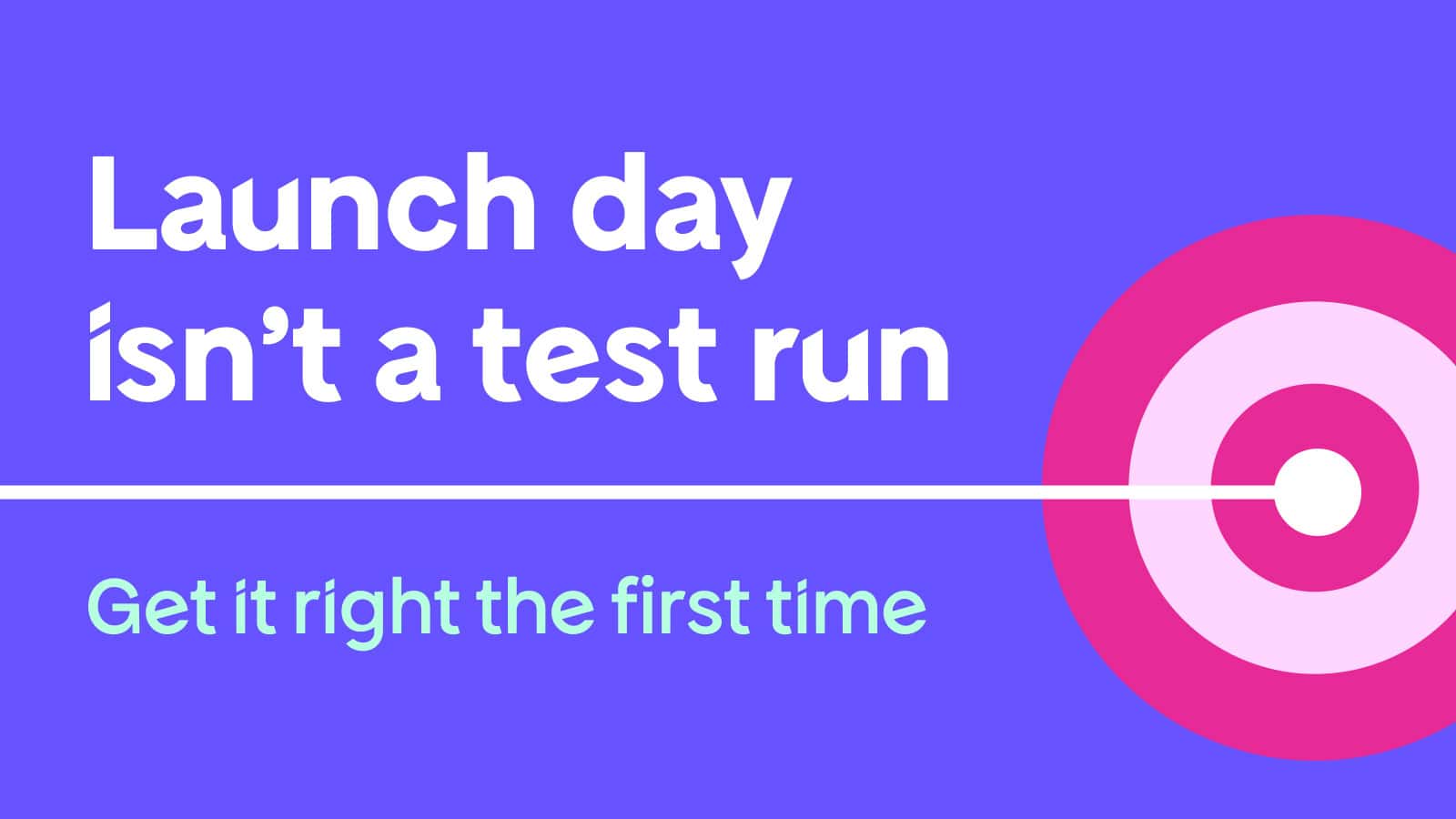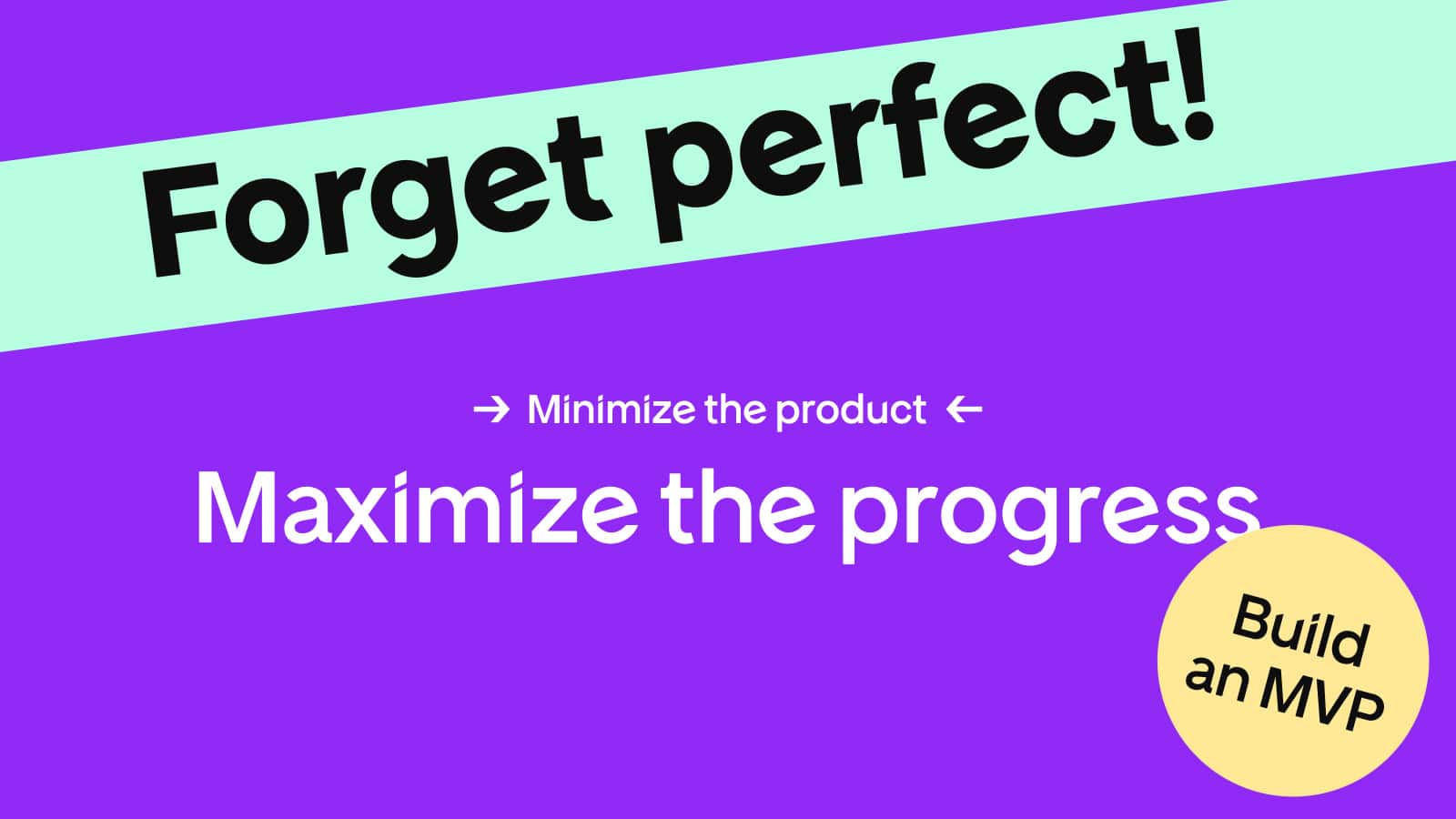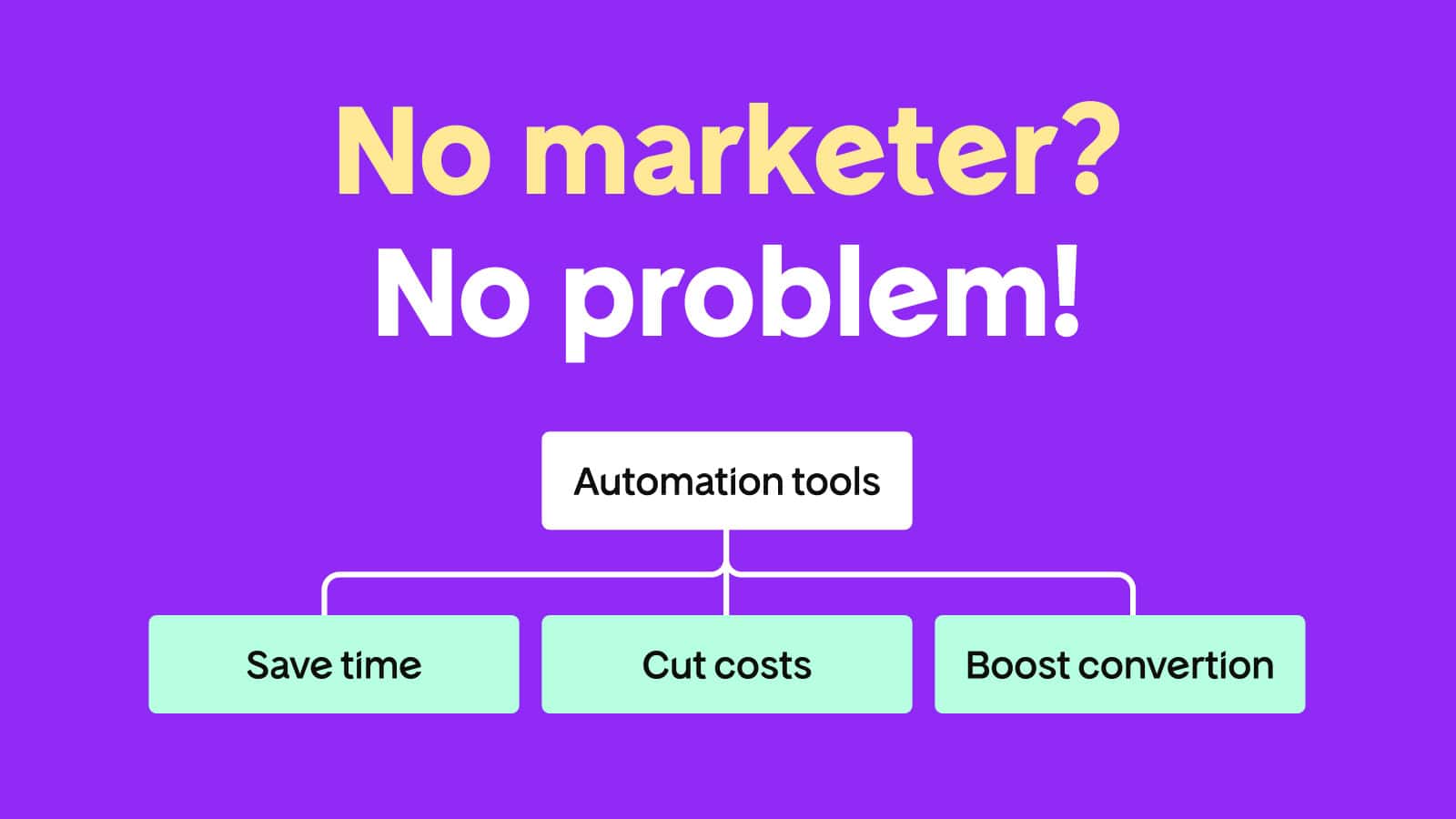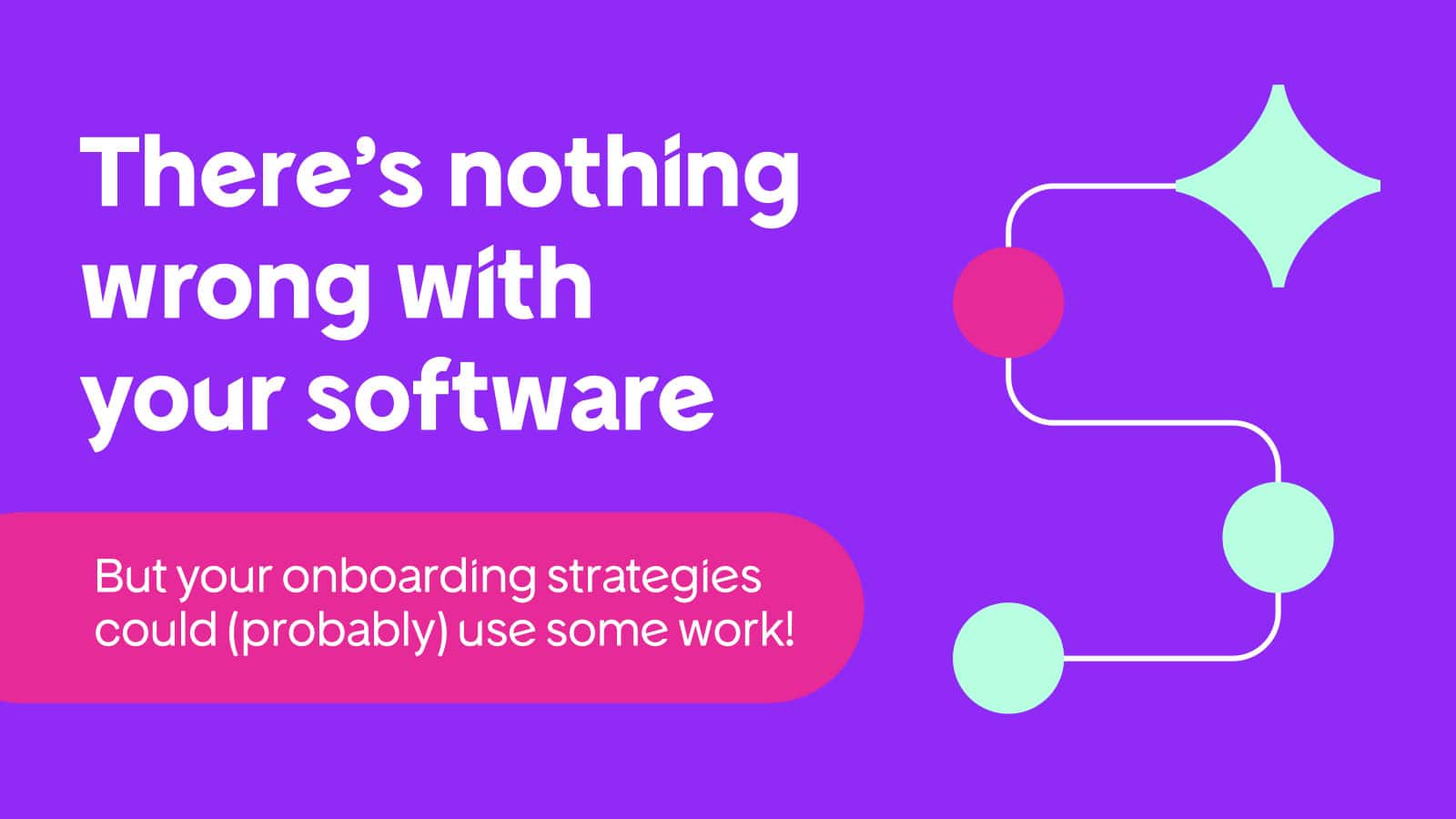|
|
Launching a SaaS product isn’t just another milestone. It’s a high-stakes moment where everything you’ve built is suddenly on the line.
Your infrastructure, onboarding flow, pricing strategy, and assumptions about your users are all put to the test the moment you go live. And unlike a feature update or marketing campaign, there’s no quiet rollback or A/B testing your way out of a poor first impression.
Once you’re live, you’re exposed.
For indie software makers and small teams, the pressure of a product launch is even greater. With limited time, small or no teams at all, and high expectations, what should feel like a proud launch often turns into a frantic sprint filled with last-minute fixes, unanswered questions, and a deep fear that something critical was missed.
This guide was created to help you launch with control and clarity instead of chaos.

What follows isn’t a generic checklist or a feel-good pep talk. It’s a strategic framework built from real-world experience. We’ve spoken with seasoned SaaS founders and operators who have launched under pressure, made mistakes, and learned how to get it right the next time:
- Milos Savic, Founder at NegotiateWind
- Srdjan Ristanovic, CTO at brigit.dev
- Nevena Sofranic, Founder at Omnes Group
- Lazar Krstic, Founder at Detachless
- Jaume Freixa Sureda, Founder at Jaumatic
Their insights featured throughout this article will help you avoid common pitfalls, focus your energy, and launch with confidence.
Let’s get started.
Pre-Launch: Stabilize and Simulate
Before you think about demos or Product Hunt campaigns, focus on what matters most: will the product hold up when people actually use it?
The most catastrophic failures at launch don’t come from bad marketing, but systems that break under real-world conditions.
This phase is about preparing your product for reality, not just rehearsing the perfect pitch.
Harden Your Backend: Optimize for Stability, Not Complexity
Before your product earns its first hundred users, your backend doesn’t need to be sophisticated. It needs to be solid.
A common trap for early-stage teams is overengineering their infrastructure. Tempted by shiny tooling and best practices from tech giants, founders often find themselves configuring Kubernetes clusters, building out elaborate CI/CD pipelines, or adopting microservices far too early.
Srdjan Ristanovic, CTO at brigit.dev, has seen this mistake play out often:
“Small teams often waste time solving imaginary problems. I’ve seen teams invest weeks into complex DevOps setups — and then fail to catch a missing environment variable that breaks production.”
At this stage, complexity is a liability. What matters most is resilience or, simply put, being able to recover fast if something breaks.
Here’s what a practical pre-launch backend setup should focus on:
- Simple hosting: Start with a minimal AWS or DigitalOcean setup that supports quick rollbacks.
- Error monitoring: Use tools like Sentry or BugSnag to catch crashes and surface real issues in real time.
- Structured logging: Set up readable logs using Mezmo, Loki, or a simple ELK stack to track what’s going wrong and why.
- Testing critical paths: Don’t chase 100% test coverage. Prioritize unit and integration tests for anything tied to billing, auth, or onboarding. Use AI tools to accelerate the boring test-writing work.
Nevena Sofranic, founder of Omnes Group, puts it simply:
“Stick to a monolith. Run it on a single box if you have to. Scaling comes later. Stability is non-negotiable.”
Think of your backend like a parachute. It doesn’t need to be elegant or advanced — it just needs to work every time you pull the cord.
Simulate Load and Traffic
Just because your app works in staging doesn’t mean it’ll survive real usage.
Load testing isn’t about preparing for virality. It’s about making sure your app doesn’t buckle when five users hit “Sign up” at the same time. You don’t want your first real traffic spike to turn into your first outage.
Srdjan gives an example from his own experience:
“We didn’t replicate full user journeys. We hammered key endpoints to see what failed under pressure. That told us more than any synthetic dashboard ever could.”
His team used tools like Artillery to simulate high-concurrency API calls and identify critical weak spots. This kind of focused stress testing reveals what your error dashboards won’t.
Start with this lightweight chaos stack:
- Artillery or k6 to generate load
- Mezmo or Datadog to visualize stress in logs
- Postmark or Mailgun to monitor email throughput under pressure
Even the little things can break at scale. Nevena learned this firsthand:
“Email services rate-limit aggressively. We would’ve missed it if we hadn’t tested real volume across real flows.”
Simulate chaos now so you can fail in private to avoid flopping in front of your first 1,000 users.
Lock Down Payments and Subscriptions
You can recover from a bug. You can fix a typo. But a broken payment flow? That’s a trust killer.
When users reach your pricing page or see a credit card form, they’re looking for clarity and confidence. If anything feels off (confusing plans, unclear charges, errors during checkout), you’ve likely lost them for good.
Lazar Krstic, founder of Detachless, shared a hard lesson:
“We launched with four pricing tiers. Too many users couldn’t figure out which one was for them. We thought we were offering choice — we were creating confusion.”
Early-stage billing needs to be simple, stable, and well-tested. Here’s what that looks like:
- Use a reliable provider like Freemius if you’re building a general SaaS
- Implement robust retry logic and card update flows
- Send clear, user-friendly dunning emails to handle failed payments
- Don’t wait to test pricing — get feedback during your beta
And don’t forget renewals. Nevena warns:
“Involuntary churn eats 20–40% of subscription revenue. Most founders don’t even realize this until it’s too late. Plan for failed payments from day one.”
A smooth billing experience signals maturity. A broken one is a silent churn engine, making you bleed revenue and trust before you even notice.
Security and Compliance: Trust Starts Early
Every founder claims to care about trust — but users don’t buy promises. They look for proof.
And that proof starts with security fundamentals. As Nevena explains:
“Compliance isn’t optional. You might not need SOC 2 yet, but GDPR and CCPA readiness should be baked in from day one.”
Here’s the bare minimum for a secure SaaS launch:
- Encrypt data at rest
- Use HTTPS across everything
- Implement strong password hashing (e.g. bcrypt, Argon2)
- Manage sessions securely to prevent hijacking or leaks
These are not “nice to have” — they’re foundational. If you can’t protect your users’ data, you don’t deserve their trust.
And it’s not just about back-end protocols. UI-level privacy matters, too.
Milos Savic, founder of NegotiateWind, shares one example:
“We disabled screen recordings in our negotiation flows to protect user privacy. Trust starts on day one — especially when you’re dealing with sensitive data.”
Users won’t ask you for these details. They’ll assume you’ve done your homework. If they find out otherwise, you’ve already lost them.
Validate Before You Launch, Not After
Most critical bugs don’t show up in staging — they show up when real users start clicking around in ways you never anticipated. That’s why pre-launch testing isn’t optional. You need to simulate chaos before it’s real.
The best way to do that? Get the product into the hands of real people.
Milos did a soft launch with a closed group of football clubs and agents — and it exposed a massive gap:
“We discovered there was a whole ‘pulse-checking’ phase that happens before negotiations even start. We hadn’t accounted for that at all, and it changed how we framed our flows.”
These insights don’t surface in unit tests or synthetic dashboards. They only emerge from watching people use your product in real-world scenarios.
Nevena echoes this:
“We got some of our most actionable feedback from Reddit and Discord. It was raw and unfiltered — exactly what we needed.”
Her team also used tools like Hotjar to observe onboarding friction in the wild:
“We ended up cutting entire steps after seeing where users were stalling or bouncing. You can’t catch that in a spreadsheet.”
Pre-launch testing is not a formality. It’s your only shot at catching fatal UX, performance, or onboarding issues while the stakes are still low.
Go or No-Go: Your Launch Readiness Stress Test
Most founders run on instinct. You’ve built the product, run a few beta tests, and think: “We’re probably good to go.” But that gut feeling isn’t enough.
Because on launch day, the real world doesn’t care about “probably.” It cares about what breaks. And who fixes it.
That’s why launch readiness is not a vibe. It’s a stress test. One that makes you confront the sharp edges of your product, your operations, and your team.
You’re not just checking if things exist. You’re asking if they can withstand pressure.

Technical Confidence: Can You Ship Without Flinching?
Here’s what your team should confidently answer yes to before going live:
- Can we roll back the release safely if something breaks?
- Have we tested signup, onboarding, and checkout flows with real users — not just teammates?
- Can our system handle edge cases like expired cards, weak connections, or slow international DNS?
- Are our uptime monitors, error trackers, and alert systems configured and tested?
If you can’t answer yes to those questions, you’re not ready to launch. You’re ready to crash.
Operational Readiness: Who Owns the Chaos?
Now shift the spotlight to the humans behind the scenes:
- Is someone explicitly responsible for every critical flow during the launch window?
- Has your support team rehearsed triage and FAQs?
- Do you have escalation protocols and pre-written comms for known risks?
- Is your team operating from a shared playbook or just hoping for the best?
Nevena reflects on a painful oversight:
“We didn’t assign launch-day roles clearly. When we hit a wall of user support tickets, we froze. Everyone assumed someone else was handling it. A simple pre-launch triage doc or AI-based support widget would’ve made all the difference.”
Readiness is not about avoiding chaos. It’s about assigning ownership before it hits.
Launch Day: Turning Exposure into Execution
The moment you hit “go,” your product enters the wild. You’re no longer dealing with hypothetical edge cases. You’re in the trenches with real users, real workflows, and real consequences.
This is not the time to chase vanity metrics. This is the time to monitor what matters, act decisively when things break, and lead the narrative — before it leads you.
Real-Time Monitoring: Measure What Moves or Breaks the Business
Your dashboards shouldn’t just look impressive. They should tell you whether your company is still breathing.
Nevena emphasized ruthless prioritization:
“If your dashboard isn’t telling you when users can’t pay or sign in, it’s a liability. Pretty charts don’t matter. Stability and flow continuity do.”
At a minimum, your monitoring stack should give you full visibility into:
- Authentication and signup success rates
- Server health (uptime, latency, error rate)
- Payment processing success and failure notifications
- Conversion across onboarding milestones
Srdjan Ristanovic’s team leaned on a layered stack:
- Prometheus + Grafana for system metrics
- Loki for live log inspection
- PostHog for user behavior visibility
- Stripe alerts to catch billing errors instantly
“We configured alerts to wake us up if signups dipped or auth tokens failed. Everything else could wait.”
If a core system breaks, you should know within seconds. Not hours.
Handling Glitches: Your Product Will Break — Plan for It
Even the best-prepared launches encounter bugs, outages, or performance issues. What separates resilient teams from reactive ones is how they handle the moment things go wrong.
Here’s a simple triage framework:
- Fix it live if it can be resolved in under 60 minutes and the blast radius is small
- Rollback or hotfix if it’s critical and affects multiple users
- Communicate fast — use modals, banners, email, or system status pages
Milos Savic shares how his team prepared:
“Every high-risk feature had a kill switch. If we saw signs of trouble, we toggled it off instantly. Users never noticed half the fires we were putting out.”
Transparency is key. Users are forgiving — if they feel informed and respected. Radio silence destroys trust faster than any bug.
Messaging Strategy: Command the Narrative or Lose It
Your launch messaging doesn’t start with the homepage copy. It starts with understanding who you’re talking to and what they actually care about under pressure.
Jaume Freixa, founder of Jaumatic, frames it clearly:
“Messaging is not about describing features. It’s about showing users why your product matters right now in the language they use every day.”
Before launch day, you should:
- Write modular launch copy for push notifications, banners, emails, and help docs
- Align your value props with the ICP’s real pain points, not your internal roadmap
- Prepare rebuttals for expected objections — pricing, onboarding, or missing integrations
- Brief the entire team on tone, positioning, and escalation messaging
Milos recalls how aligning the message with the audience paid off:
“We worked with football clubs. We didn’t say ‘digital contract management.’ We said, ‘No more negotiation chaos.’ That one sentence unlocked adoption.”
Launch communication isn’t marketing fluff. Its credibility is under scrutiny.
Read our marketing handbook to learn how to effectively build traction.
Metrics That Matter: Beyond Vanity to Retention Signals
Launch traffic is a sugar high. What actually predicts the future of your product is whether users stick around long enough to find value.
Here’s what you should be tracking from day one:
- Activation rate: Percentage of users who hit your product’s “aha moment”
- Onboarding drop-off: Where people quit, and why
- Time-to-value: How long it takes for users to reach their first success
- Support load per user: A hidden signal of product clarity
Nevena explains it this way:
“If users get value in under ten minutes, they’ll forgive rough edges. If they’re confused for more than five, they’re gone.”
Obsess over outcomes. Not just events.
Post-Launch: From Triage to Traction
Your launch doesn’t end when the countdown clock hits zero. In many ways, it’s just the beginning.
The week after launch is your window to build trust, collect insights, and solidify your product’s first impression. Skip this step, and you’ll end up scaling problems, not solutions.
Week One: Stabilize Before You Scale
The priority here is ruthless. Fix everything that blocks trust.
That means:
- Addressing bugs in core workflows (signup, payments, onboarding)
- Clarifying any part of the UI that confused more than a few users
- Deleting or disabling anything that caused support spikes
Milos says it best:
“We didn’t touch the roadmap for a week. Every dev was focused on stabilization. You can’t stack new features on a shaky foundation.”
Nevena’s team used a 10-minute rule:
“If it affects every user and takes more than 10 minutes to fix, we roll it back. Otherwise, we patch forward. No hesitation.”
This is not polish. This is survival.
Month One: Build Your Feedback Flywheel
Once the fires are out, it’s time to switch from reaction to reflection.
Use this month to create structured learning loops:
- Watch session recordings and heatmaps daily
- Categorize feedback from chat, email, and social media by issue and persona
- Run short interviews or surveys focused on first impressions and use cases
- Identify repeat complaints — especially the ones that feel “minor” (they often aren’t)
Milos leaned into intentional friction:
“We kept our early user base small on purpose. That let us go deep on feedback and fix blind spots. Speed came later.”
Nevena reminds us that launches aren’t one-offs:
“Every major feature, pricing change, or audience shift should be treated like a micro-launch. You build that muscle by reflecting, documenting, and iterating.”
This is how good products become great.
Final Thought: Launching Is a Skill. Build It.
No product launches itself.
Behind every successful launch is a team that treated the moment with the seriousness it deserves. Not just because of hype — but because it was the clearest signal to users that this product, this team, and this experience is ready.
And readiness isn’t a feeling. It’s a system.
This playbook gives you that system. One built from the lessons, scars, and recoveries of people who’ve already walked the path. It’s not about perfect execution. It’s about clear ownership, brutal honesty, and fast response.
Want to focus on building and launching while someone else handles subscriptions, tax compliance, software licensing, and churn reduction?
This is what we do at Freemius.
Launch with confidence. Build with intention. Grow with resilience.








